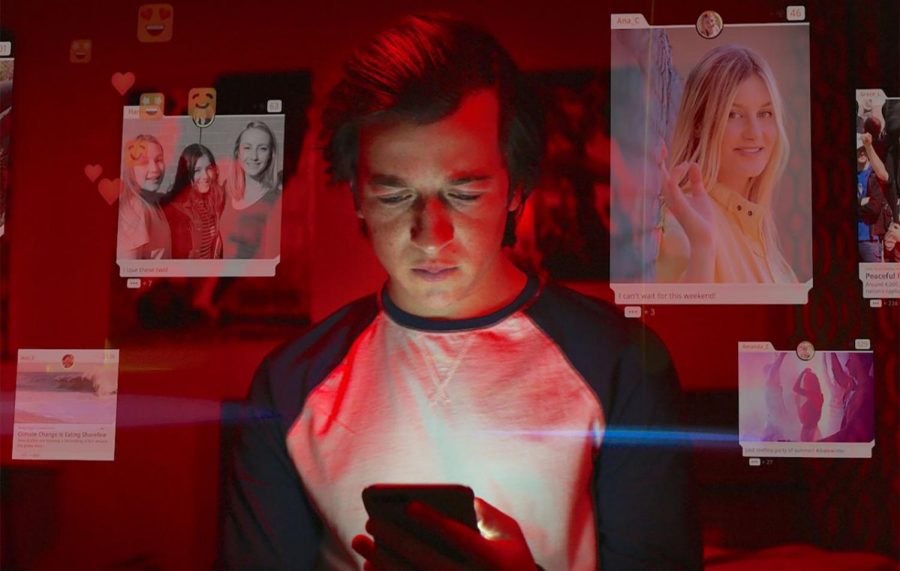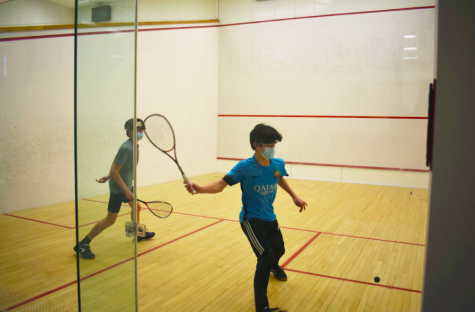The Social Dilemma: The Problem We Live With
Like most, I found myself turning towards my phone at an increasingly frequent rate during the pandemic. Without the ability to interact face to face with peers, Snapchat, TikTok, Instagram, and texting became the only available outlets for such conversations. This connection, although meaningful, came at a cost. On these apps, it is easy for minutes to turn into hours, and hours into more hours . . . soon enough, the rabbit hole of the internet swallows you up for a day. Throughout the experience, you convince yourself, “I am the one in control.” This claim makes sense, as we are the users, and we should be manipulating our devices, not the other way around. However, as I watched the Social Dilemma, which I found ironically while browsing Netflix, I realized that this idea could not be further from the truth.
The Social Dilemma, released January 26, 2020, was Jeff Orlowski’s newest documentary, an exploration into the world behind the social media apps that play a vital role in human civilization. Orlowski details the fictional week of a suburban family, highlighting the family’s phone usage, and cataloging a teenage boy’s fall into the world of conspiracy theories. Intermittently, the plot is interrupted and Orlowski presents a panel of experts to help the viewer understand the inner workings of applications. Tristan Harris, a former design ethicist at Google, Tim Kendall, the early president of Pinterest, and Jeff Seibert, a former Twitter executive, headline the group, providing an insider’s look into the world of persuasion technology.
Orlowski begins the documentary by explaining the shocking nature of the algorithms controlling our phones, our usage, and inevitably, our beliefs. Tristan Harris, the co-founder of Humane Technology, describes the equation that tech companies use to maximize profit as a simple formula: increased time using companies’ applications translates to a higher number of viewed ads, which in turn allows the company to profit at a greater rate. Jaron Lanier, an advocate for humane technology, puts it, “If you are not paying for the product, then you are the product.”
In Lanier’s approach, tech companies view the user as the product to sell, ad purchasing companies as the consumer, and use all possible means to “cultivate” as many users as possible. By using strict and extensive surveillance methods, computer algorithms are able to predict content which a user will enjoy, thus enticing the individual to use the app even more. This creates a cycle of screen usage that major technology companies profit from.
With this understanding, Orlowski moves on, shifting the viewer back to the live-action scene of our modern family. He first introduces the teen boy, exposing the gradual transformation of an avid soccer player, to an extreme and active member of a fear-based movement. Given our increasing knowledge surrounding the nature of the algorithms behind social media, it is clear the role technology played in radicalizing this boy. By feeding only agreeable information into a viewer’s content, one is soon emboldened by like-minded individuals, marginalized from mainstream groups, and comfortable enough to take their beliefs a step further, a process that was vital to the recent coup at our country’s capital. Although the movie was released before the attack on the Capitol, its relevance to the conspiracy problems our country faces today is clear, poignant, and rather scary.
To me, Orlowski’s ultimate genius is his ability to allow the viewer to understand the far-reaching impact of social media. He introduces the boy’s younger sister and details her struggle with her outward appearance on social media and its perpetuation of unrealistic standards of beauty. Orlowski later introduces brutal data on how sharing apps can cause
teen-suicide and self-harm by lowering teenagers’ self-esteem. By sharing this story, he concretizes our involvement as teenagers in the systems and affirms the danger we face by opening our phones.
I sat silently for a few moments after finishing the film. Jeff Orlowski, his panel, and the live-action actors do such a masterful job of explaining the malicious algorithms that control our phones, it becomes terrifying. In the weeks following watching the Social Dilemma, I found myself noticing my own habits, reliance, and involvement in the system every time I open my phone. But for me, I think it is vital that fear is not the only idea to be extrapolated from the Social Dilemma. As Tristan Harris writes, “We are living in a utopic dystopia,” a statement that fully encompasses our current relationship with this technology. Social media and the internet have accomplished amazing things, brought us together, and advanced our society in previously unimaginable ways. Yet, as the Social Dilemma highlights, we, as the users, must continue to hold these companies accountable to maintain the beauty of this technology, through lawmaking, greater regulations, and most importantly, continuing to use our phones humanely by understanding the forces behind them.







